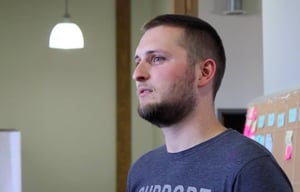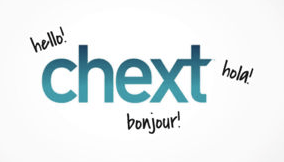Customer Development
Customer development plays a crucial role on all levels of commerce, from fledging startups to multinational corporations. But if your business is brand new, customer development in those tender first months may mean the difference between sinking or swimming.
In the following article, we'll explore why you need customer development, and how the scientific method can help you build a successful business.
Lowest Price v. Best Fit
In this piece from Inc. Magazine, author Susan Friedman says "If you're not differentiating yourself in the marketplace, what happens is the consumer looks at price as being the motivator." In other words, targeting a specific audience is the only way to break through the clutter of competition. If you don't pick your ideal client, they won't pick you. You want to be known for your expertise, not for the lowest bid. The lowest bid strategy inhibits your potential for upward mobility. What's more, if your clients and client relationships are consistently less than ideal, your work remains lodged in a place of mediocrity. It can be difficult to build a portfolio that supports your new asking price.
Common Obstacles to Finding the Customer
The common wisdom when it comes to discovering and marketing to your ideal client is to narrow the field as much as possible. In the age of hyper-specialization, knowing your audience has two major benefits. First, it helps you produce highly relevant content and services. Second, it clues you in to how much of a market your business actually has, which can help determine viability of the product or service.
Ironically, even the word "narrow" is vague. There are one thousand ways to define a segment of the population. Age, income, gender, marital status, education, and interest all may play a role. How do you know which definition is most relevant to your product? This knowledge may not only shape your marketing strategy, but it may also determine the course of the product itself. Some products have an obvious demographic target. For example, someniche businesses exist to serve children with special needs. Depending on the business, this can be further narrowed down into age range, severity of the need and localization. Outreach efforts can seek specific pathways through schools, doctor's offices, etc. If this niche business addresses a real problem, and is the first or best to do so, chances are they'll nab a fairly high percentage of the market.
Most of the time it's not this simple. Often, you're competing with a series of similar products and services. To stand out, it's necessary to speak to your customers, your specific customers, in a way that no one has spoken to them before. You'll need to say something that makes your competitors sound like noise under your signal. The tricky part is, sometimes it's not obvious who this ideal customer is. Sometimes, instead of obvious traits, like gender, age, or socioeconomic status, you're looking for a common need.
Identifying the Need
A need is essentially a problem. To solve the problem is to fill the need. For example, Mutually Human developed Inspire to help a local church manage members and patrons. Contact Management software is particularly important for non-profits, who often rely on volunteers and donations, but such software is usually very expensive, with high additional fees for each license. Observing this problem in a specific use-case made it easy for Mutually Human to see where other non-profits, churches, or community programs could use Inspire. As a result, Mutually Human set out to simplify the task of managing contacts for an accessible subscription fee. Thus, developing software for one customer revealed the problem faced by many customers, regardless of their specific mission.
Some products still require a bit of workshopping to really define the relevant customer base. One of our developers, Ryan Montgomery, is also the co-founder of SpendWisely. SpendWisely's flagship product is Chext, which was recently mentioned in this CNBC article. When Ryan first developed Chext, he was newly married and needed a better way to balance his checkbook with his wife. The software he created for his own personal use was essentially his minimum viable product.
The Value of an MVP
Ryan and his cofounder, Jeff Bell, were very proactive in workshopping Chext, as well as getting it into the hands of actual consumers. User testing is important because most users need some sort of prototype before they can honestly evaluate how they would use it. If product development is too time-consuming or expensive, sometimes mocks are enough to get started. In this case, you show the user a series of inactive screens, and they show you where they would click. This process has its own drawbacks and and benefits which are further described in this presentation.
Your task as a marketer and entrepreneur is to understand the long thread of commonality that ties your customers to each other and to your product. Ryan's own history with Chext led him to focus the messaging on young married people. But when Ryan workshopped his product and messaging, he found that many potential customers felt isolated because they weren't married. In fact, many potential adopters were college students, managing money on their own for the first time. So what did his actual audience have in common with his intended audience? Both were entering into a new realm of responsibility, and both desired long-term solvency in their financial goals. That's when Ryan realized that this need, and not a demographic point, should be the most important focus of his messaging.

It's always possible to make adjustments as you go, but ultimately, marketing and communication efforts depend on a solid grasp of your target audience. Unfortunately, the bigger burden is usually on smaller startups. Larger firms with big budgets and broader appeal have the ability to wield traditional, mass-blast advertising. Smaller startups, on the other hand, have to be more precise and creative.
With all the widely available social tools and the increasing popularity of "Lean Startup", implementing and testing your minimum viable product is more possible and more important than ever before. This is a learning process. Don't limit your options too severely right away. You can waste plenty of time and money by clinging to misguided assumptions.
Scientific Method
Do you remember learning the scientific method in school? The process is surprisingly similar. This is because the scientific method generally applies to all evidence-based inquiry. Here's a breakdown of the scientific method, and how it translates into customer development and the lean startup.
1. Define your question. (Define your problem).
2. Observe. (Research this problem or need, how common it is and whether other attempts have been made to resolve it)
3. Form a hypothesis (Create your Minimum Viable Product)
4. Test the hypothesis through experimentation * (Perform user-testing with your MVP)
5. Analyze the data (Pretty obvious translation, here)
6. Interpret the data, conclude whether you need a new hypothesis (Iteration**)
7. Publish results. (Launch!***)
8. Retest. (Whether your like it or not, your product will be tested every day by dynamic consumer markets and competitors - this is a good thing! Use it to continuously improve.)
* When I spoke to Ryan about his role in user-testing Chext, he said "You have to assume your assumptions are wrong," and he's right. The best way to know if your darling has enough backbone to stand up in the real world is to try everything you can to unhinge it. People have an inherent confirmation bias, meaning they tend to see what they want to see. That's not to say you should be a pessimist. If your product or service seems doomed to fail, that doesn't mean you need to scrap it. But you need to know where the weak points are.
** Most of what the Agile Philosophy would describe as "iteration" is just a repetition of steps 3 through 6.
*** Unless you've already launched. In which case, new update! Congratulations!
Honesty is Important
And finally, like any good scientist, you must be honest with yourself. You can't force a product into the hands of people who have no need for it. A customer will not do you a personal favor, nor will fundamental laws of demand reshape themselves to fit your dreams. It's not the end of the world if reality doesn't meet expectations.If you start your product with the mindset that it's an experiment on the market, you're headed in the right direction. Every so-called failure becomes valuable intel, etching out the shape of success.
In the End
Ultimately, even when you do find your ideal customer-base, it might not be big enough to be viable. "There might only be 10,000 people who want your product," said Ryan. "You have to be prepared for that." The good thing is, you'll never truly hit a wall. The world will never run out of problems, and innovative entrepreneurs will always be advancing the course of human history, just as they always have. And remember, even if you come across some bad news in customer development, awareness is always better (and less expensive) than ignorance.

